6 German Desserts That Are More Style Than Substance And 10 That Are Rich, Authentic Must-Trys

German desserts offer a diverse range of flavors and textures that can captivate the taste buds and eyes alike. While some are celebrated for their intricate designs and presentation, others are cherished for their authentic taste and comforting richness. This guide will explore six desserts that may be more about style than flavor, alongside ten that are must-try culinary experiences, offering a rich taste of German tradition and innovation.
1. Baumkuchen (Tree Cake)

The Baumkuchen, or “Tree Cake,” captures attention with its mesmerizing ring pattern, reminiscent of tree growth rings. This classic German dessert is often visually striking but falls short of delivering a flavorful experience, especially if not consumed fresh. Typically, its texture can be dry, and the taste somewhat plain unless complemented by additional elements like chocolate or jam. Despite its shortcomings in taste, the artistry in its preparation is undeniable, requiring skilled craftsmanship to achieve the perfect layers.
2. Liebesknochen (Éclair-style “Love Bones”)
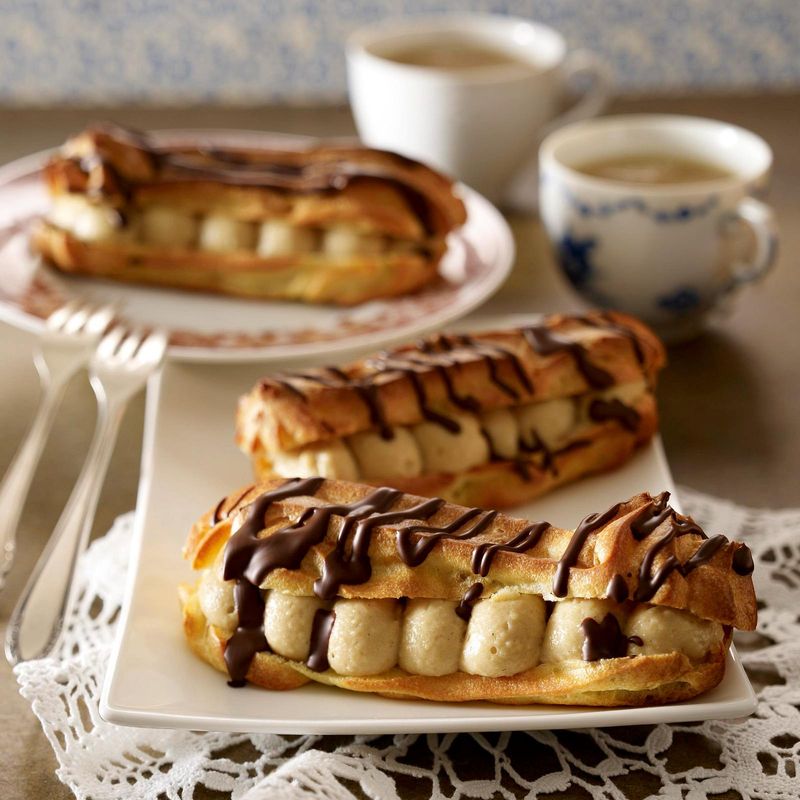
Liebesknochen, or “Love Bones,” charm with their whimsical name and inviting presentation. These éclair-style pastries, however, rely heavily on precise execution to impress. The choux pastry should be light and the whipped cream filling perfectly balanced, yet they often disappoint in texture and flavor if not made with precision. While visually appealing, these delightful treats can sometimes lack the memorable taste their name suggests, leaving them more of a visual delight than a taste sensation.
3. Donauwelle (Wave Cake)

Donauwelle, translating to “Wave Cake,” aims to impress with its layered complexity. Combining chocolate and vanilla batters, cherries, custard, and a chocolate glaze, it promises a flavor journey. However, the actual taste can be overly sweet and muddled, overshadowing the intended balance of flavors. Its aesthetic appeal often outweighs its gustatory impact, making it a dessert that looks more exciting than it tastes. Properly executed, though, it can be an intriguing blend of textures and tastes.
4. Spaghettieis (Ice Cream Spaghetti)

With a creative twist, Spaghettieis delights in appearance as ice cream mimicking a plate of spaghetti. This fun treat consists of vanilla ice cream pressed through a spaghetti press, topped with strawberry “sauce” and white chocolate “cheese.” Although visually entertaining, it may lack depth in flavor, as the components are fairly standard. It’s a novelty item cherished more for its quirky presentation than culinary innovation, appealing to those who enjoy visual puns in their desserts.
5. Berliner Pfannkuchen (Jam-Filled Doughnut)

Berliner Pfannkuchen, often known simply as Berliner, is a staple on German streets. These jam-filled doughnuts promise a delightful experience, yet the reality can be less satisfying. The dough may turn out dense, and the jam might be either too sweet or insufficient. Freshness is key to elevating this dessert from ordinary to extraordinary. Though it may not always meet expectations, its classic appeal and comforting aroma keep it popular among traditionalists.
6. Frankfurter Kranz (Frankfurt Crown Cake)
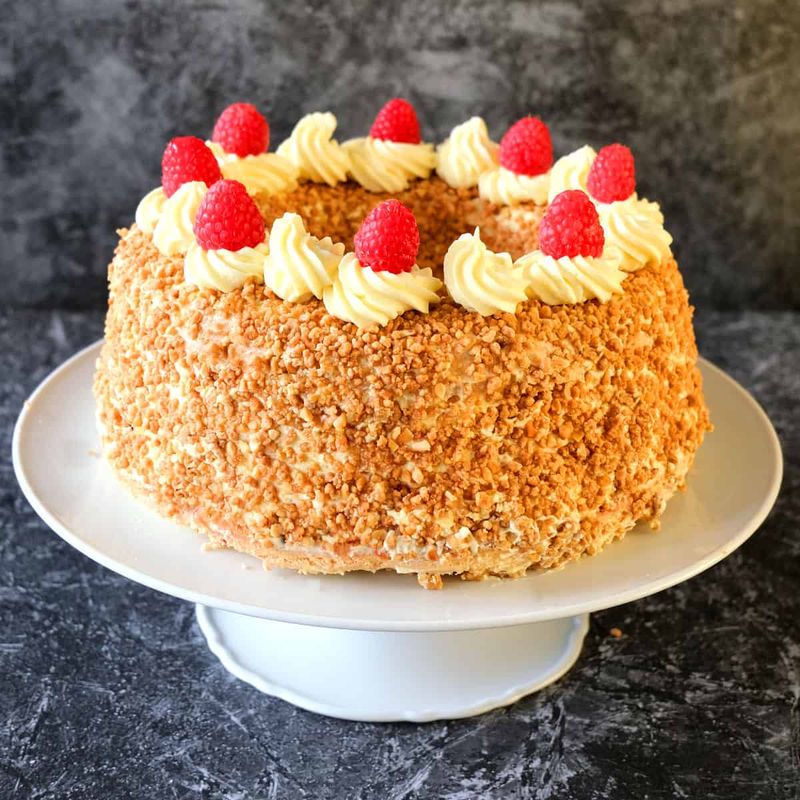
Frankfurter Kranz, or “Frankfurt Crown,” boasts a royal presentation with its buttery layers, rich buttercream, and crunchy nut toppings. While visually impressive, its heavy butter content can overwhelm the palate, leading some to find it excessively rich. Achieving the right balance of flavors is crucial for this dessert, which can otherwise be a heavy experience. Despite this, its celebratory appearance makes it a popular choice for special occasions, symbolizing affluence and indulgence.
7. Schwarzwälder Kirschtorte (Black Forest Cake)
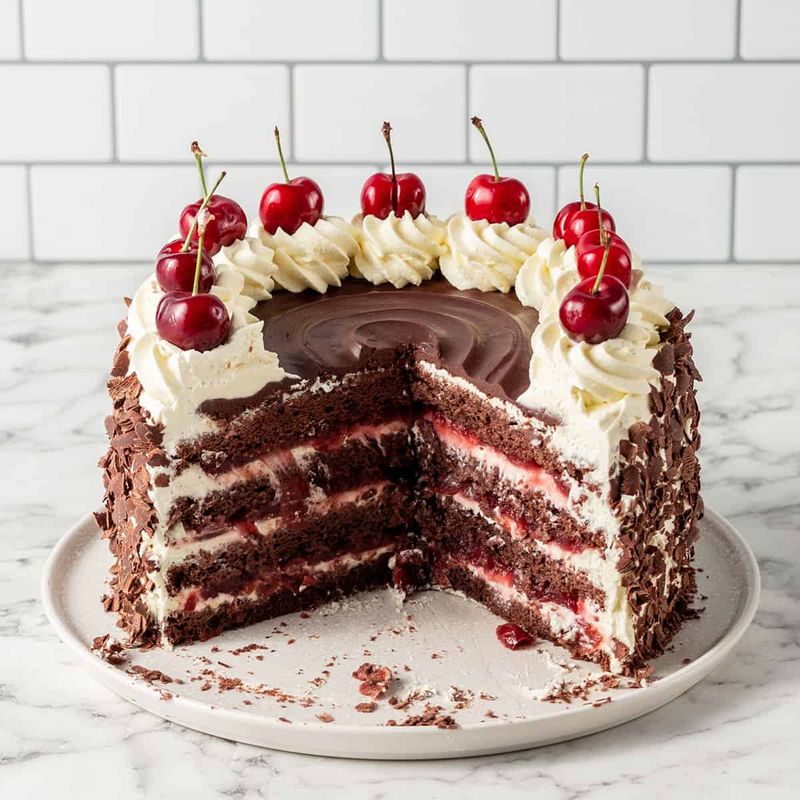
Schwarzwälder Kirschtorte, or Black Forest Cake, is a quintessential German delight. Its decadent layers of chocolate sponge, whipped cream, and cherries, infused with kirsch (cherry brandy), deliver a rich and boozy experience. Each bite is a harmonious blend of textures and flavors, making it a beloved dessert around the world. The cake’s history dates back to the early 20th century, originating in the Black Forest region, where cherries and kirsch are local specialties.
8. Apfelstrudel (Apple Strudel)

Apfelstrudel, a comforting embrace of warm, spiced apples wrapped in thin, flaky pastry, embodies the essence of German baking. Sliced and served with a dusting of powdered sugar or a scoop of vanilla ice cream, it offers a wholesome and nostalgic flavor. This dessert’s appeal lies in its simple ingredients and the comfort it brings, making it a must-try for those seeking authentic German culinary experiences. A traditional delight, it’s often enjoyed during chilly autumn afternoons.
9. Bienenstich (Bee Sting Cake)

Bienenstich, or Bee Sting Cake, tantalizes with its honey-almond caramel crust and luscious custard filling. This dessert’s name intriguing origins from a legend where bakers used it to protect their city from invaders. The soft yeast dough, combined with the sweet and crunchy topping, creates a perfect balance of textures. Whether served at a casual gathering or a festive occasion, its delightful taste and historical roots make it a cherished treat across Germany.
10. Käsekuchen (German Cheesecake)
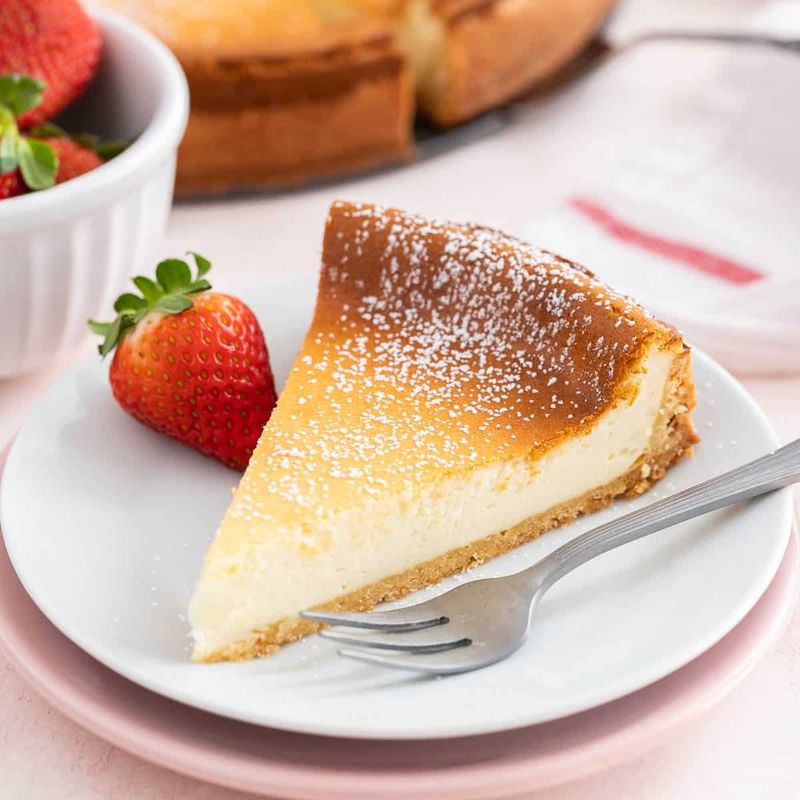
Käsekuchen, the German adaptation of cheesecake, is distinct with its use of quark cheese. This makes it lighter and less dense than its American counterpart, with a subtle tang and a buttery crust. Often topped with fruit compote, its delicate flavor and creamy texture offer a refined dessert experience. Its simplicity allows the quality of ingredients to shine, making it a staple in German households. Whether enjoyed on its own or with a cup of coffee, it’s truly delightful.
11. Rote Grütze (Red Berry Pudding)
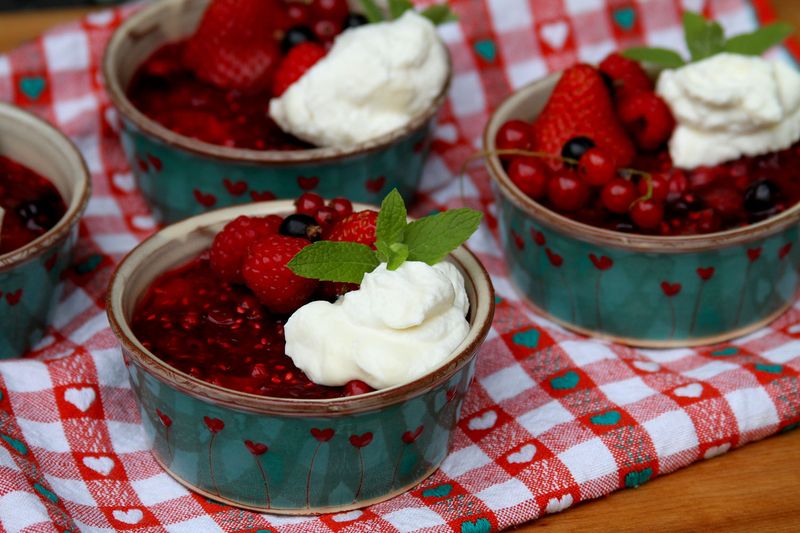
Rote Grütze, a vibrant red berry pudding, serves as a refreshing contrast to heavier desserts. Made with a mix of berries like raspberries, strawberries, and red currants, it’s thickened into a luscious sauce. Typically served chilled with cream or vanilla sauce, it offers a tart and sweet flavor profile. Originating in Northern Germany, it’s a staple during berry season. Its simplicity and refreshing taste make it a perfect summer treat, providing a burst of fruitiness in every bite.
12. Zwetschgendatschi (Plum Cake)
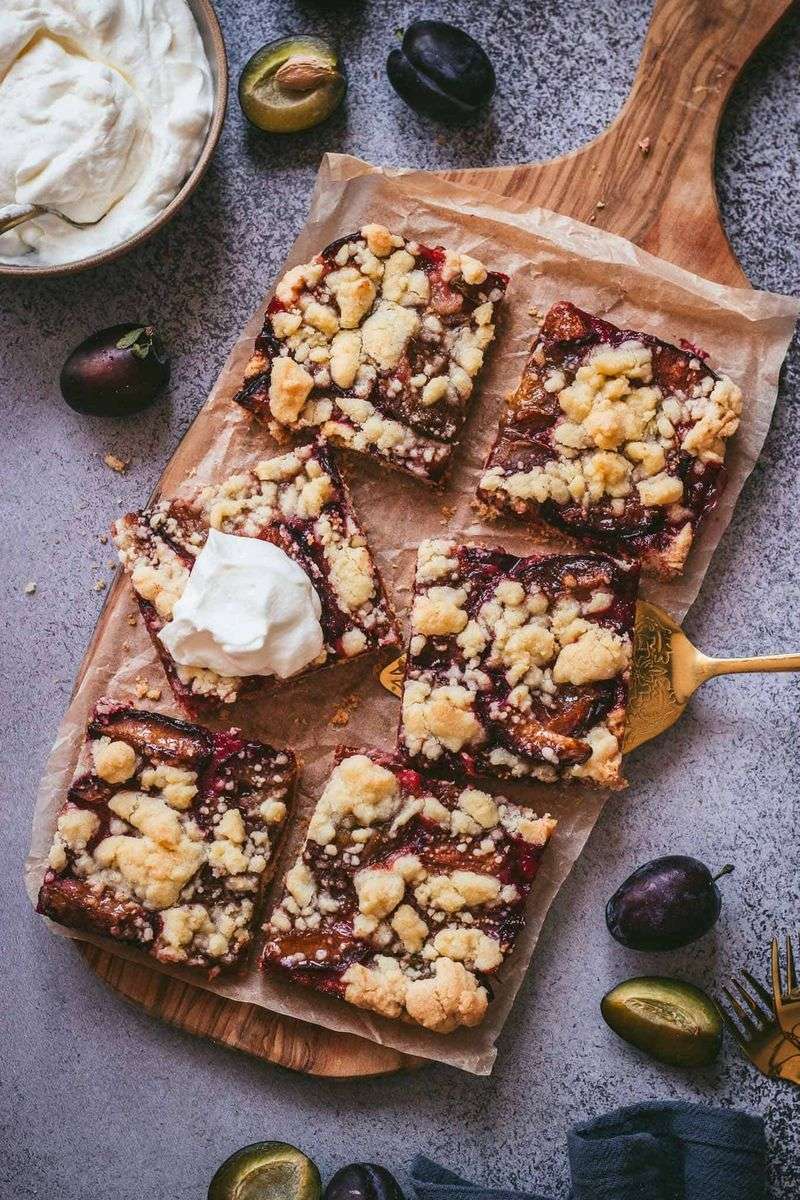
Zwetschgendatschi, a classic plum cake, captures the essence of late summer in Germany. With juicy plums nestled on a buttery crust, it’s a dessert filled with comfort and warmth. The balance of sweet and tart from the plums with the crumbly base creates a satisfying taste. Often enjoyed with a dollop of whipped cream or vanilla ice cream, it makes for a delightful afternoon treat. Its regional variations, especially popular in Bavaria, reflect the diversity of German baking traditions.
13. Vanillekipferl (Vanilla Crescent Cookies)
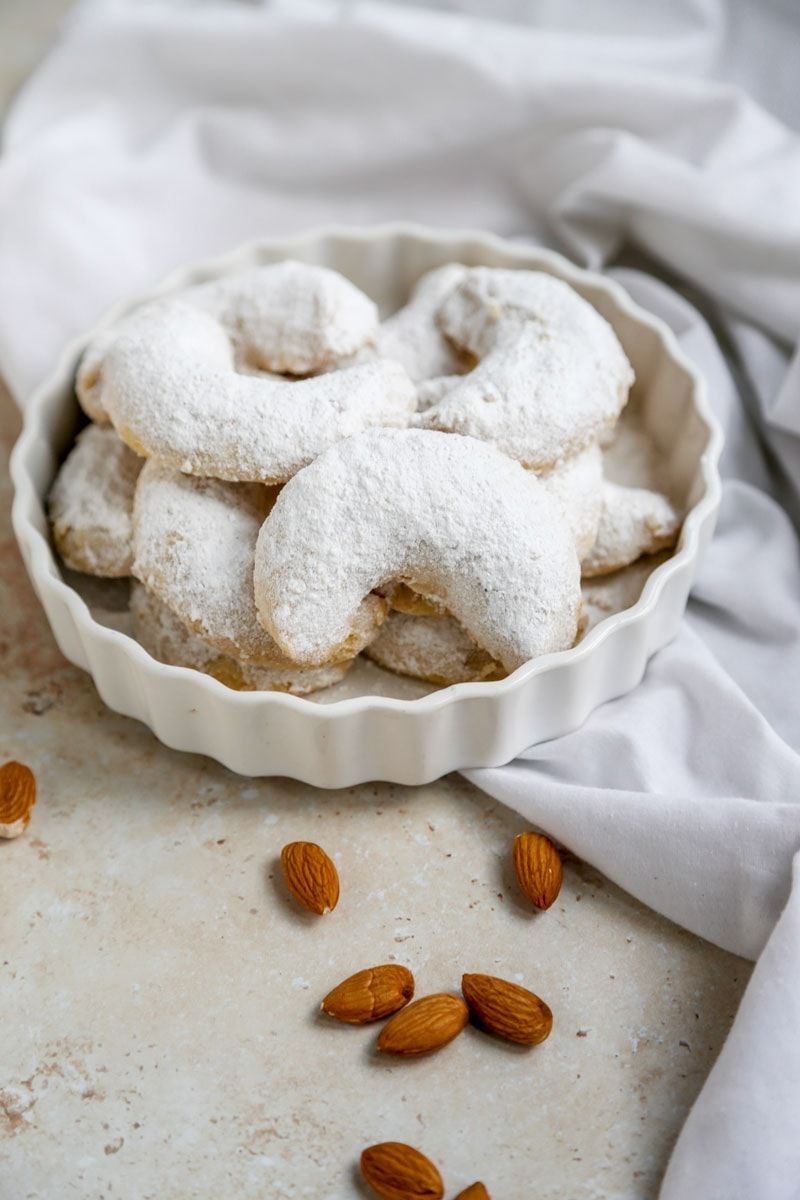
Vanillekipferl, delicate crescent-shaped cookies, embody the festive spirit of Germany’s holiday season. Made primarily from ground almonds and dusted with vanilla sugar, they melt in your mouth, leaving a subtle sweetness. Their buttery texture and comforting vanilla aroma make them a staple during Christmas celebrations. Traditionally baked in family gatherings, they’re often enjoyed with a warm cup of tea or coffee. These cookies, with their simple ingredients, offer a taste of traditions passed down through generations.
14. Stollen (Christmas Fruit Bread)
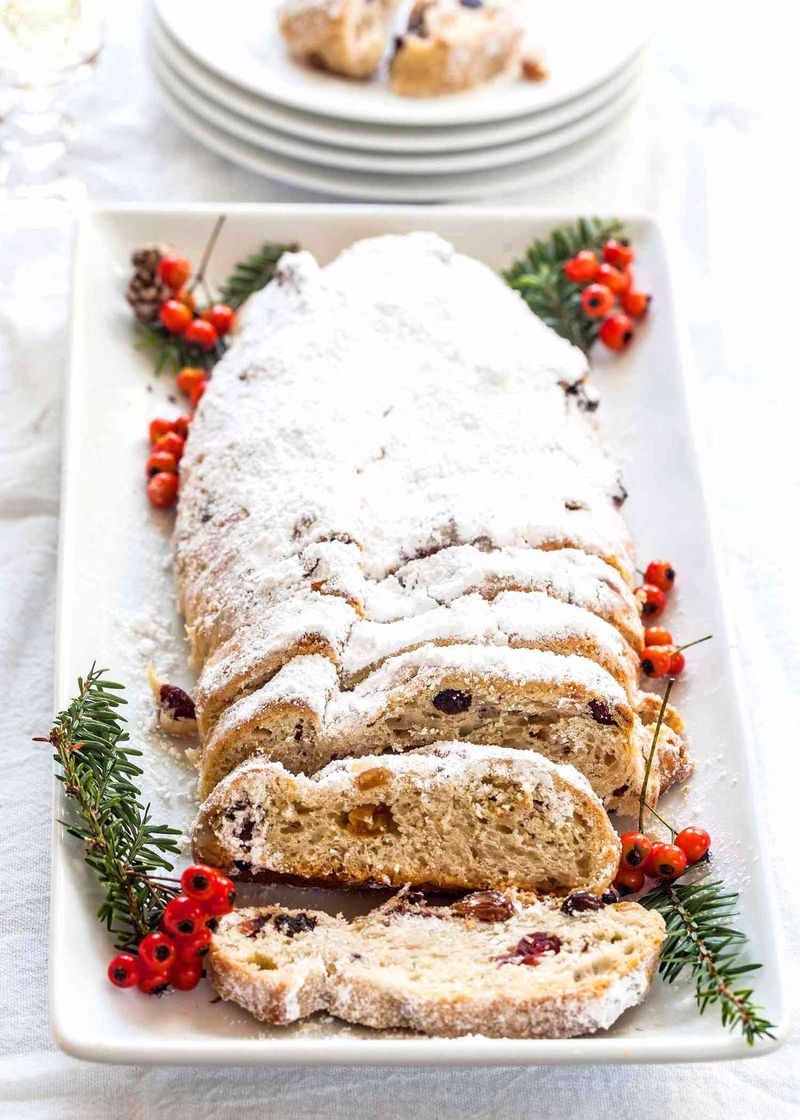
Stollen, Germany’s iconic Christmas fruit bread, is a celebration of rich flavors and holiday traditions. Packed with dried fruits, nuts, and spices, it’s dusted with powdered sugar, resembling a snow-covered winter landscape. This dense, buttery bread is often enjoyed sliced and served with coffee or mulled wine. Its origins trace back to the 15th century in Dresden, where it remains a seasonal favorite. A slice of this festive bread brings warmth and joy, embodying the spirit of Christmas festivities.
15. Dampfnudel (Steamed Sweet Dumplings)

Dampfnudel, a comforting steamed sweet dumpling, offers a soft and pillowy texture. Cooked in a buttery-sugary crust, it’s often served with vanilla sauce, creating a cozy dessert perfect for chilly days. Its origins are rooted in Southern Germany, where it’s traditionally enjoyed as both a dessert and a meal. The combination of its fluffy interior and the rich sauce makes each bite invitingly warm and satisfying. Whether as a treat or a main dish, it’s a beloved part of German culinary heritage.
16. Schmalzkuchen (German Mini Doughnuts)
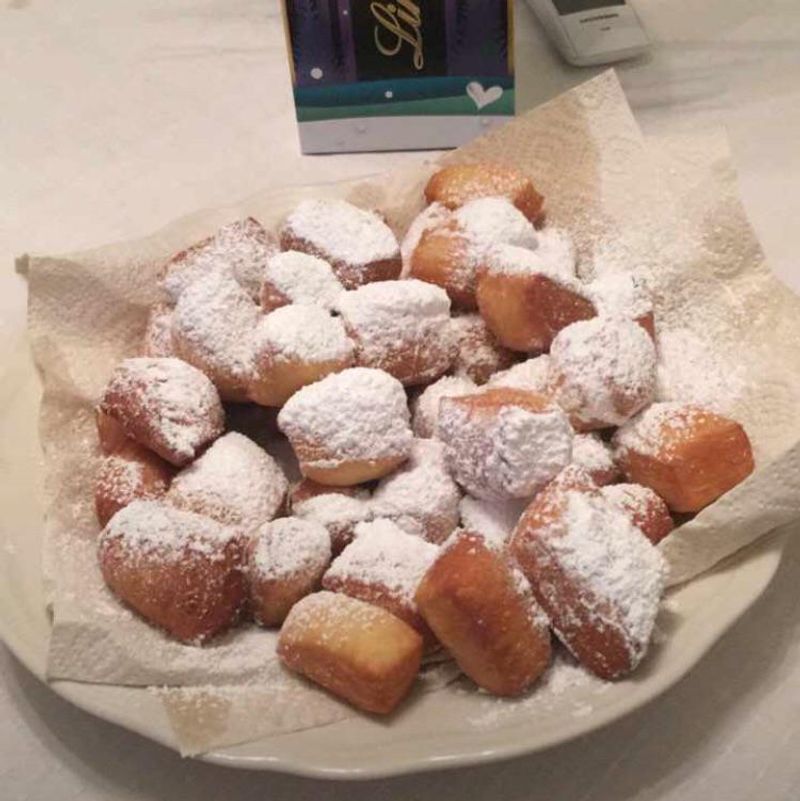
Schmalzkuchen, or mini doughnuts, are small fried delights that bring joy to any German market visit. These bite-sized treats are crispy on the outside, soft inside, and generously dusted with powdered sugar. Popular during fairs and festivals, their sweet aroma attracts visitors seeking a quick indulgence. The simplicity of their ingredients, combined with the nostalgic feel of market stalls, makes them a must-try. Perfect for sharing, these little delights often become a highlight of festive outings.
